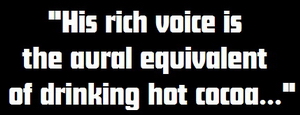|
| |
|
STORY PLACEMENT THIS STORY TAKES
PLACE BETWEEN THE TV
MOST OF THE AUDIO BOOK "THE KILLING
STONE" TAKES PLACE
PRODUCTION CODE 4A
WRITTEN BY TERRANCE DICKS
DIRECTED BY CHRISTOPHER BARRY
RATINGS 10.2 MILLION
RECOMMENDED PURCHASE 'ROBOT' DVD (BBCDVD2332) RELEASED IN JUNE 2007.
BLURB MORTALLY WEAKENED
BY THE SPIDER QUEEN
REGENERATE. HIS
INVOLVING COMPONENTS
THE CULPRIT IS QUICKLY
JUST HOW IS THE ROBOT AGENDA OF THE SCIENTIFIC REFORM
SOCIETY? AND CAN THE
RECOMMENDED PURCHASE BBC AUDIO CD (ISBN 1- 4056-779-45) RELEASED IN NOVEMBER 2007.
BLURB Tom Baker reads THE complete, unabridged novelisation, first published by Target Books in 1975.
|
|
|
PREVIOUS (FACTION PARADOX ALTERNATIVE)
Robot 28TH DECEMBER 1974 - 18TH JANUARY 1975 (4 EPISODES)
In February 1974 - after having his fill of the Army, the Merchant Navy, the construction trade, and even a Monastery – a certain forty-year old, out of work actor telephoned BBC Head of Serials Bill Slater demanding work. And he got it.
April 1974 saw Tom Baker film his first ever scenes as the Doctor – a role that he would become synonymous with for-literally-ever.
“I won’t do it! I won’t! I won’t!”
“Robot”, which began transmission just after Christmas 1974, is a regeneration story not quite like any other. The UNIT boys have seen it all before; the Brigadier and Sergeant Benton barely bat an eyelid, and even Elisabeth Sladen’s Sarah Jane Smith takes the Doctor’s miraculous transformation very matter of factly. The Doctor himself escapes without any major trauma or regeneration crisis; in fact, within twelve minutes of the first episode he is into his new outfit and raring to go! As such, “Robot” has a much lighter feel than any other Doctor’s debut serial. Terrance Dicks’ wry, almost sardonic script may lack originality, but even in 2007 it still stands up as a first rate piece of entertainment.
Baker – if you can get over him looking so damned young – acquits himself stupendously well right from the world go. Jelly Babies. That bloody Scarf. Dicks’ script gives Baker ample opportunity to showcase his inherent eccentricity and really put his own stamp on the character, but it also very cleverly puts the Doctor in a lot of scenes with the Brigadier which help ease the transition for the viewer. The immediate rapport between this new Doctor and the Brigadier is proof certain that this bohemian scruffbag is the Doctor.
However, sue to all the hype about “Robot” being Baker’s first serial, it is very easy to forget that this story also introduces us to another new regular – Ian Marter’s Harry Sullivan. Like Baker, Marter manages to impress immediately. There is something disarming about Harry; a painful sort of honesty that more often than not overlaps with gross stupidity. Marter plays him with a sort of feckless incompetence that suits the character perfectly. And whilst thanks to Baker’s relative youth, young Harry is redundant in a physical sense, he is still a wonderful foil to the Doctor. He is the customary straight man. I think they work so well together because the Doctor really seems to like Harry in a cruel sort of way – he ties him up, runs away from him, volunteers him for dangerous undercover missions… it is as if Harry is the Doctor’s little brother that it is his duty to lovingly torment.
“Doctor what are we going to do? Or are we going to leave it all to Miss Smith?”
Funny as it is, it is also sad in a way. The Brigadier has no-one to tell his secrets to because the UNIT family is breaking up. Yates is gone. Jo. Even ‘his’ Doctor. “Robot” is definitely the beginning of the end for UNIT. It would be the last time that we would see Bessie and those infamous corridors…
The main plot of “Robot” is, as you might reasonably deduce from the title, about a robot. Substitute the word ‘King Kong’ for ‘Robot’, and you have more or less got the entire story. Dicks has admittedly borrowed heavily from that particular classic in writing this four-parter – “homage!”, as he profusely claims on the DVD – but in fairness it works wonderfully and effectively sets the standard for the next few seasons. “The Brain of Morbius”? “The Seeds of Doom”? Even “The Deadly Assassin”? All similar ‘homages’. If it works…
The DVD, as always, is delightfully produced by the Restoration Team. For a full-price release the special features are relatively few in number, but the quality of the material more than makes up for that. I have always said that I would rather have one or two substantial documentaries on a disc than forty-two three-minute featurettes, and so I have to say that I am thrilled with the new forty-minute documentary, “Are Friends Electric?”
Not only are Baker, Sladen and Dicks all on board for the documentary, but the Restoration Team also managed to hunt down Barry Letts, Philip Hinchliffe and Christopher Barry, not to mention most of the surviving cast from this story. As usual, Baker and Dicks are by far the most fascinating to listen to. Baker obviously loves telling the romantic story of how one day he was labouring on a building site and then the next he was an icon, and quite right too. And as for Dicks, he unashamedly admits to inventing the whole ‘leaving script editors always write the next serial’ tradition because he was leaving a salaried job for the freelance world, and as such he wanted to secure himself one last job!
Above: The legendary Terrance Dicks in the "Are Friends Electric?" documentary
The commentary is also wonderfully entertaining to listen to. As these things so often go, most of the interesting anecdotes ultimately find their way into the disc’s showpiece documentary, but there is always a bit more to be found on the commentary. On this DVD for example, Sladen kept making me laugh with her frequent digs at Dicks’ script. She obviously did not mean to keep doing it, but especially towards the end she could not leave it alone. The cliffhanger ending to Part Three was not “one of their best”, she says innocently, before inadvertently going off on one about how Harry’s character was used so well in all the other stories of the season… bar this one!
The other noteworthy special feature is a fifteen-minute look at how the early Doctor Who title sequences were created with graphic designer Bernard Lodge. It is hardly mind-blowingly awesome, but it is well worth watching and nice to have on the disc. The rest of the stuff – bar those magical production subtitles; what an invention they were… - is just padding really. I could swear we have had that same Blue Peter clip on an earlier DVD release…
Criticisms? Well, the story is so cheaply made that the UNIT HQ corridors double for the interior of Think Tank without even the courtesy of a respray, and the baddies are misguided environmentalists… again. That said, they are a memorable lot, especially Patricia Maynard’s Hilda Winters. She is scary.
As for the DVD, it is becoming increasingly difficult to find fault with these releases, and the BBC / The Restoration Team / 2 Entertain / Santa Claus or whoever it is at the moment are even farming them out more prolifically than ever before so I cannot even quibble about that. At this rate our collections will be complete by 2017!
In all seriousness though, the “Robot” DVD comes highly recommended. As I have already said, you get a lovely documentary for your money and - as long as you do not expect an
epic, moving, or even
slightly reverent regeneration story - you will not be disappointed with the
serial itself. This is fluff at its best.
|
|
|
Copyright © E.G. Wolverson 2007
E.G. Wolverson has asserted his right under the Copyright, Designs and Patents Act, 1988 to be identified as the author of this work. |
|
|
Doctor Who and the Giant Robot
Somebody has given Nick Briggs control of The 7th Dimension, BBC7’s science fiction hour. It can be no surprise that Doctor Who is featuring prominently. Surprisingly though, we’re not getting broadcasts of Big Finish’s output, but instead the first ever radio-casts of BBC Audio’s readings of classic Target novelisations. Kicking off the run is Tom Baker’s first serial, Robot, as novelised by Terrence Dicks and read by mad Uncle Tom himself.
isn’t a bad choice to start a run of fourth Doctor stories, setting up his character nicely for any new series fans who might not be familiar with him, along with Sarah-Jane, Harry, the Brig and UNIT. It can’t be described as great writing - this is one of Dicks’ simpler efforts, adding very little to the televised serial. This does not detract from the enjoyment, though - this is cosy listening. It’s a nice, straightforward sort of story, nothing too complex, and I can easily imagine people happily tuning in on their lunch breaks or at home after work and listening with their higher brains asleep.
Tom Baker is, as ever, a joy to listen to. His rich voice is the aural equivalent of drinking hot cocoa. It’s certainly true that he can’t do female voices, and so he doesn’t add much characterisation to Sarah (although peculiar lines like “The thought of Miss Winters in
handcuffs brought Sarah considerable pleasure,” give one pause), but he
clearly relishes the male parts. Particularly memorable are his brusque,
blustering Brigadier and his dotty Professor Kettlewell, while his
portrayal of the robot itself, amplified and modulated, is just
perfect. What is striking is how calm and controlled his lines as the
Doctor are, in comparison with his screen performance in the original
serial. It’s odd hearing such familiar lines spoken again, with the same
voice but a different inflection. This fourth Doctor sounds far more
thoughtful, and even rather suave.
My only complaint would be the length - the unabridged reading is split
into eight half-hour chunks, and the story does feel dragged out.
Nonetheless, this is an unchallenging but very pleasurable listen.
|
|
|
Copyright © Daniel Tessier 2010
Daniel Tessier has asserted his right under the Copyright, Designs and Patents Act, 1988 to be identified as the author of this work. |
|
|
When is now? Spearhead from Space is set shortly after the Cyberman invasion depicted in The Invasion, which in turn is set four years after The Web of Fear. One school of thought places The Invasion in or around 1975, in line with its Radio Times billing, dialogue in both stories and the production team’s original intention, with the ensuing UNIT stories following shortly afterwards. However, such a placement is at odds with novels such as Who Killed Kennedy, which suggest that the Auton invasion occurred in 1970, when the serial was first broadcast.
The duration of the Doctor’s employment with UNIT has never been determined. We know that, from the Time Lord’s perspective, he was on the organisation’s payroll for the entirety of his third incarnation, but how much time passed for UNIT is another matter entirely. Indeed, as so succinctly demonstrated by Colony in Space’s bookends, the Doctor could disappear off into time and space only to rematerialise a few seconds later. This effectively allows for years’ worth of adventures taking place within a few seconds of UNIT time.
Most people generally infer that around six years passed for UNIT between Spearhead from Space and The Seeds of Doom, broadly in line with how many years had passed for viewers, but this is difficult to reconcile with “classic” UNIT dating, which is predicated upon The Web of Fear taking place in 1971 (as set out above), because Mawdryn Undead made it explicit that the Brigadier retired from active service in 1976.
Assuming that the Brigadier did not retire until late 1976, all the UNIT stories between Spearhead from Space and The Seeds of Doom (in which the Brigadier is last referred to being in active service) must therefore take place within the space of, at best, two calendar years, meaning that this story is set in mid-1976.
However, in order for this theory to even come closing to holding up, we’d have to swallow the premise that the Brigadier did not retire until very late in 1976; the events of Seasons 7 to 13 occurred within two years, despite being broadcast over six; and that Sarah Jane Smith’s throwaway “1980” line in Pyramids of Mars was exactly that – a throwaway line, perhaps even rounding up on her part.
Please see the UNIT Dating Dossier for further information.
|
|
|
Unless otherwise stated, all images on this site are copyrighted to the BBC and are used solely for promotional purposes. ‘Doctor Who’ is copyright © by the BBC. No copyright infringement is intended. |
|

.jpg)
.jpg)
.jpg)
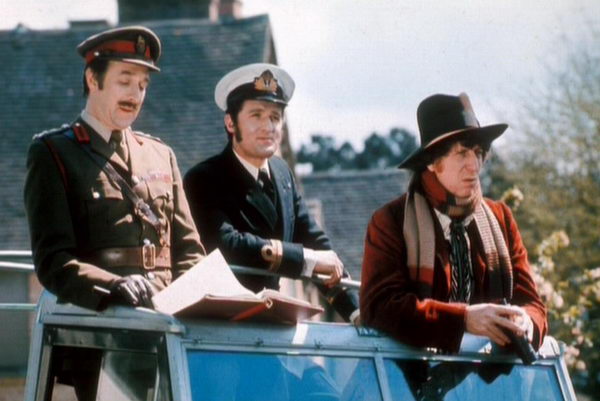
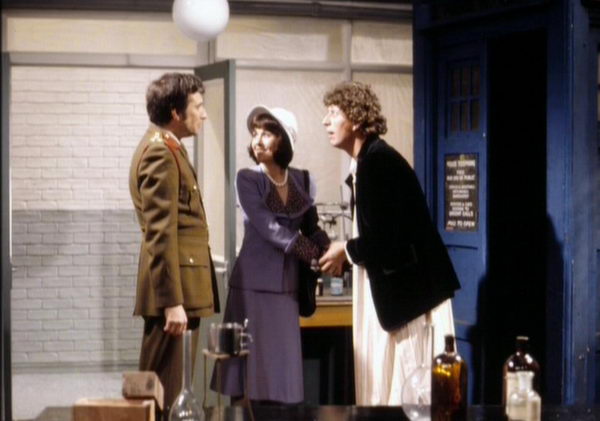
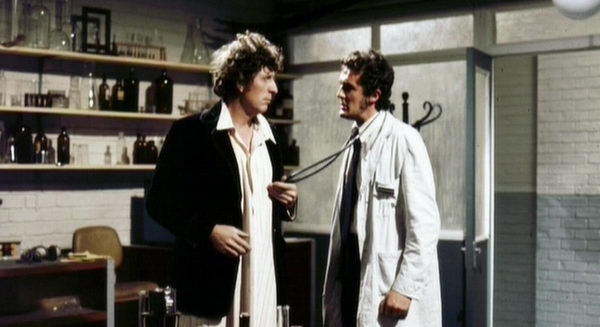
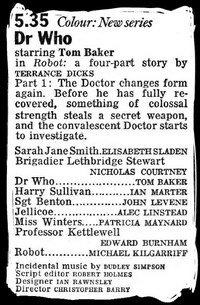
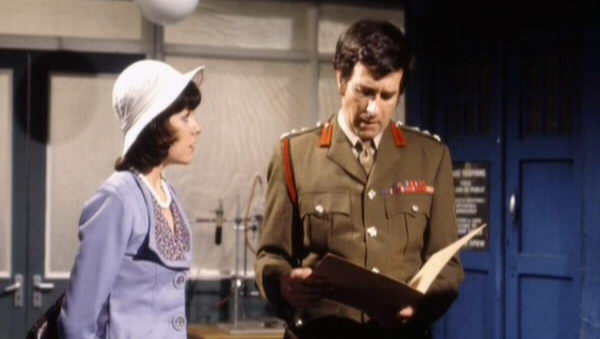
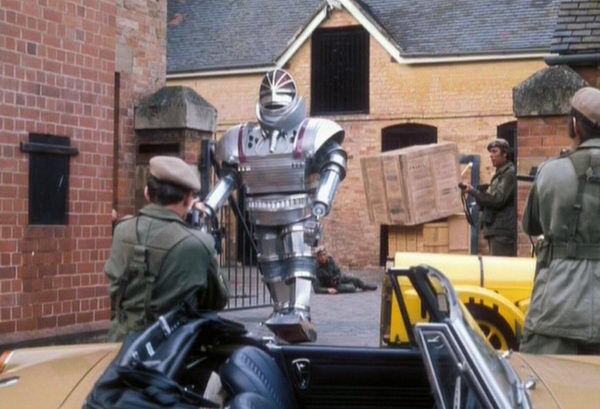
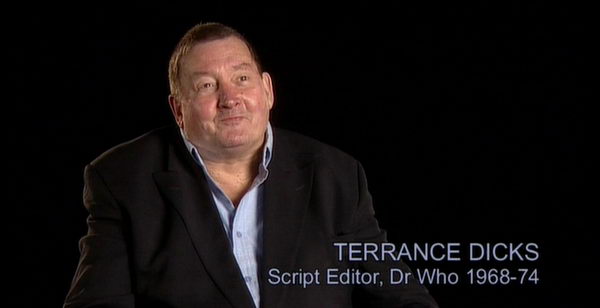
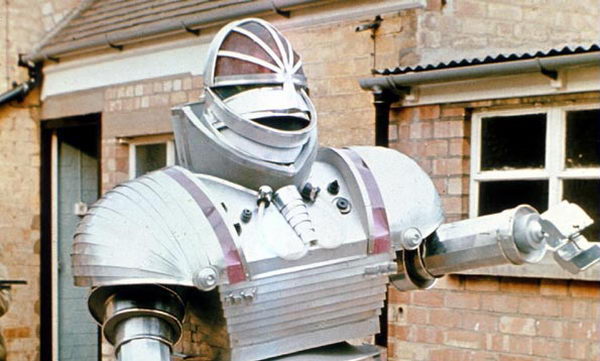
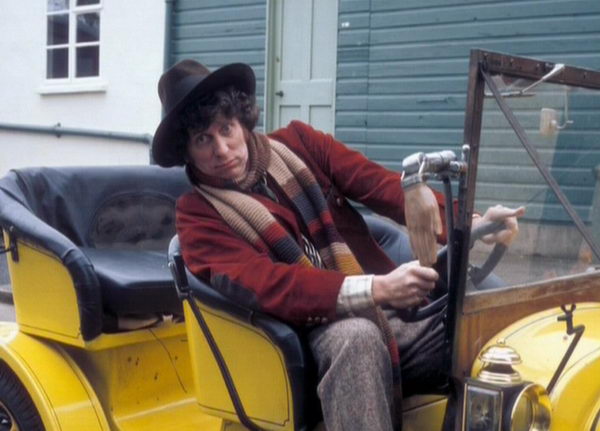
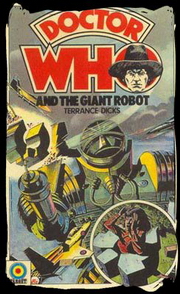 Doctor
Who and the Giant Robot
Doctor
Who and the Giant Robot